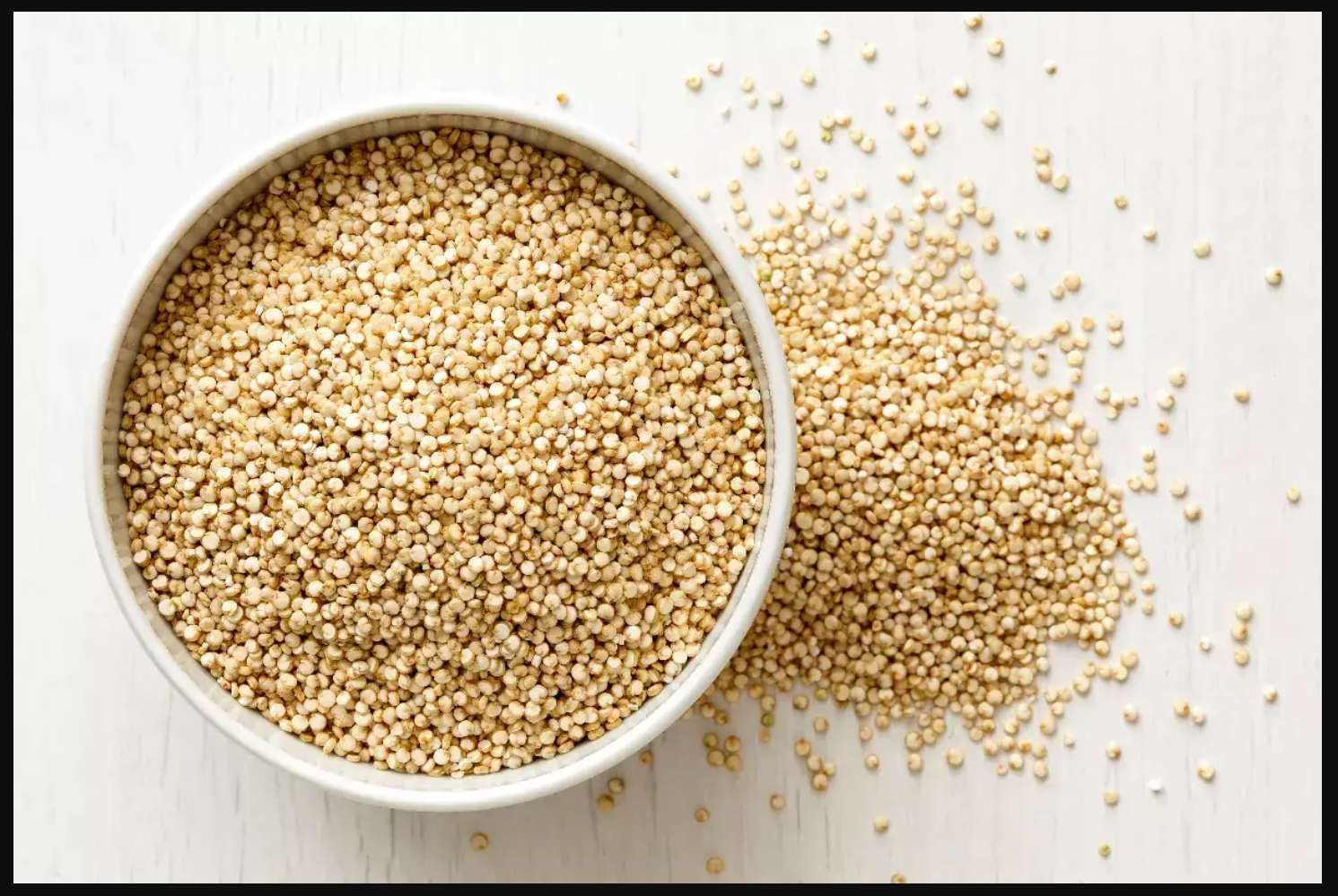
In recent years, quinoa has gained a lot of attention on social media. All the registered dieticians and self-proclaimed fitness influencers are raving about quinoa. It is gaining popularity as a replacement grain for wheat and rice. Good results and positive word of mouth are turning quinoa into a weight-loss superfood.
What type of quinoa is best for weight loss?
There are three types of quinoa: red, white, and black. The difference between them is not much. It’s just the color. However, the black one is preferred by many due to its high soluble fiber content. If you cannot find the black quinoa, it is fine. Red and white are equally good. All of them have high protein and fiber content. All major macronutrients in red, white, and black quinoa are the same.
How to cook quinoa in rice cooker?
Quinoa is cooked just like rice.
Step 1: Rinse quinoa thoroughly to remove the outer bitter layer of saponin
Step 2: Add rinsed quinoa to a pot, 1 part quinoa with 2 parts water, and a pinch of salt.
Step 3: Boil and Simmer: Bring it to a boil, lower the heat, cover the lid, and let it cook for about 15 minutes. Check periodically to avoid sticking it to the pot.
Step 4: Once cooked, let it sit for 5 minutes, then fluff it.
5 Crowd Favorite recipes of quinoa for weight loss
- Quinoa Salad: You can toss quinoa in any type of salad. Add olive oil and chili flakes to improve the taste.
- Quinoa Mixed Grain Bowl: Add quinoa to other grains like rice, barley, and millet. You can add quinoa to any dish to boost taste.
- Baked Quinoa Cookies: You can use quinoa flour or simply add the cooked quinoa to the baking mixture and cook in the oven. You will have quinoa cookies and cupcakes.
- Quinoa Soup: Add quinoa to any soup to thicken it. You can add quinoa to any soup because quinoa has a neutral taste. It will take on the soup flavor.
- Quinoa Smoothie: Add quinoa to any smoothie of your choice. It gives a rich, creamy texture. Adding quinoa to a smoothie will increase the protein content.
7 health benefits of quinoa protein
- Weight Loss: Quinoa is rich in protein and fiber. Quinoa is digested slowly; it helps you feel full for a longer time. It may help avoid extra snacks in between meals. It has high fiber content, which improves bowel movement.
- Improved Metabolism: Research has shown that quinoa can improve metabolism. It helps maintain blood sugar, improves good cholesterol, and can fight oxidative stress.
- Improved Digestive health: Quinoa is fiber-rich. It is a prebiotic in nature. It helps gut bacteria to thrive. If you have a sensitive stomach, then quinoa is the perfect food for you, as it is easy on the stomach. It prevents bloating.
- Reduced Inflammation: Quinoa has polyphenols that can help reduce inflammation, especially in people with fatty liver issues.
- Boosted Brain health: Quinoa has the Omega-3 ALA, which is known to prevent memory loss related to stress.
- Healthy skin and hair: Protein and copper in quinoa boost keratin production. Keratin is necessary for healthy hair and nails. Some studies have shown a positive correlation between collagen production and quinoa intake.
- Preserve Muscles: Quinoa is rich in protein, which can prevent the loss of muscles or wasting during weight loss. As it keeps you full for longer, it helps in a deficit diet.
Scientific Evidence on Quinoa For Weight Loss
A 2017 study published in Nutrición Hospitalaria shows the benefits of quinoa in maintaining healthy blood sugar levels.
A Plant Foods for Human Nutrition study from 2018 proves the benefits of quinoa in improving good cholesterol and reducing the bad cholesterol.
As per the American Journal of Gastroenterology, a 2014 study found that quinoa is safe for people suffering from celiac disease.
Quinoa vs Brown Rice for Weight Loss
Both quinoa and brown rice are good for weight loss management. Quinoa has higher protein and fiber content. It is gluten-free and has multiple health benefits that you may not experience with brown rice. Brown is a good alternative to white rice.
Quinoa for weight gain?
Quinoa is a healthy food that can support weight management. Weight gain from quinoa is not necessarily possible if you have a calorie-deficient diet. If you want to add quinoa to your diet for weight gain, you must combine it with other calorie-dense foods.
Any side effects of eating quinoa?
If you are allergic to quinoa, you may experience stomach aches, skin itchiness, and hives. Most people do not experience any adverse reaction. There is a lack of research data on the side effects of quinoa.

Frequently Asked Questions
Best time to eat quinoa for weight loss?
You can eat quinoa at any time of the day. Breakfast and dinner are the most popular options. Followed by the snacks in between the light meals.
Does quinoa spike blood sugar?
No, quinoa does not spike blood sugar. The glycemic index of quinoa is 53. It is digested slowly and prevents the blood sugar spike.
Does quinoa burn belly fat?
Quinoa will help with overall weight management. It will not target the belly fat only. You need a specialized workout program that targets the belly fat.
Is quinoa better than oats?
Yes, it is better than oats. As oats are made with wheat, the gluten content is high. Moreover, the nutritional profile of quinoa is much better compared to wheat. The protein and fiber content is high in quinoa.
How much quinoa should you eat per day for weight loss?
When starting, ½ cup of quinoa is a good start. Increase the amount gradually to 1 cup and then to 2 cups. 2 cups is sufficient for one person in a day to achieve the weight loss goals.
Is quinoa gluten-free?
Yes, quinoa is gluten-free.
Bottom-Line
Losing weight is not easy. To achieve a calorie-deficient diet, you can add quinoa to your diet plan. It has multiple health benefits and is readily available. Quinoa for weight loss can help achieve the desired body. It is a perfect
Disclaimer & Copyright
The content on AmericanPainSociety.org is provided for general informational purposes only and should not replace professional medical advice, diagnosis, or treatment. We make no guarantees of accuracy, completeness, or timeliness. Users rely on the information at their own risk. Always consult qualified professionals for healthcare decisions.
© 2025 American Pain Society. All rights reserved. No part of this website may be reproduced, distributed, or transmitted in any form or by any means without prior written permission.
